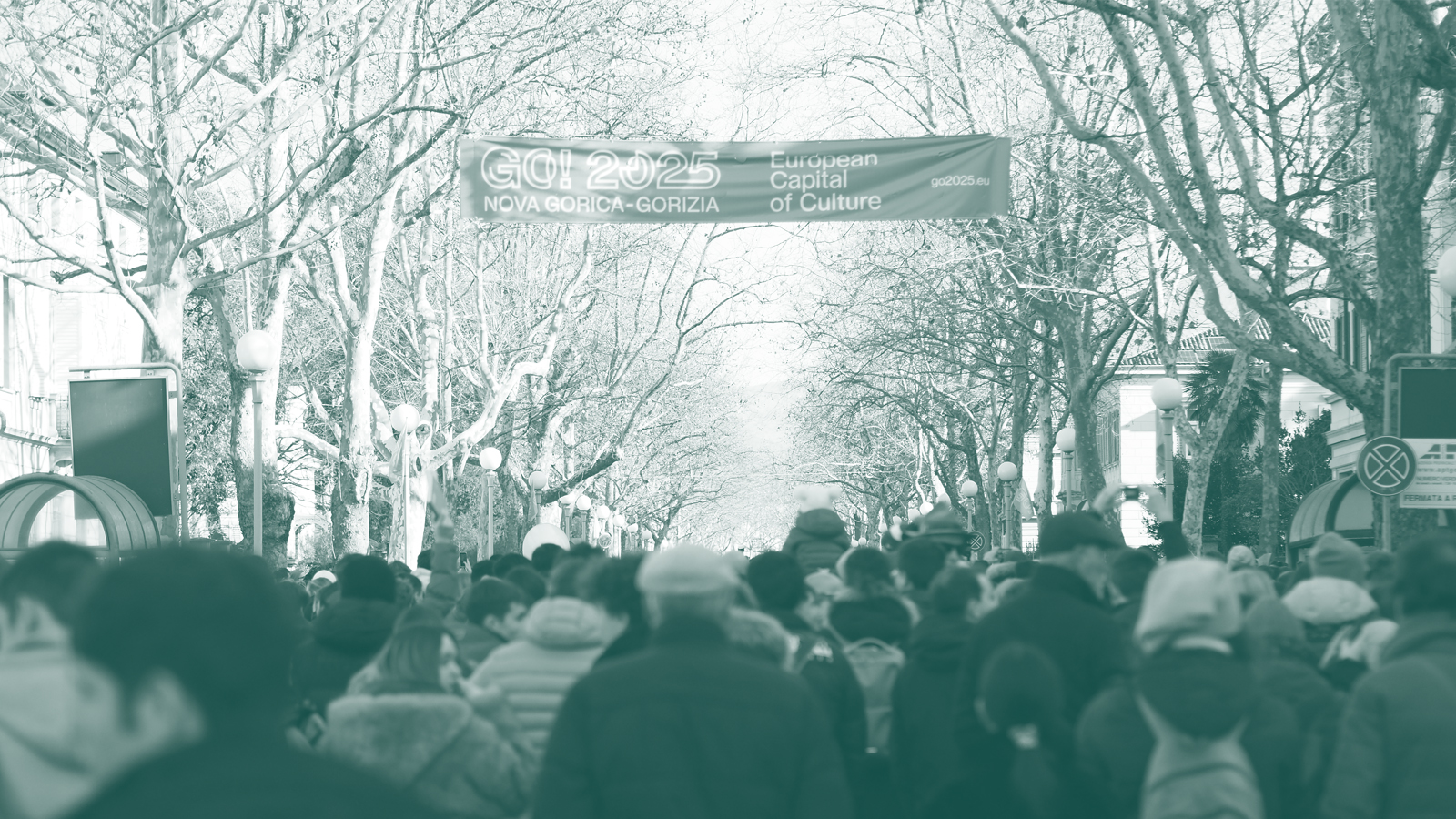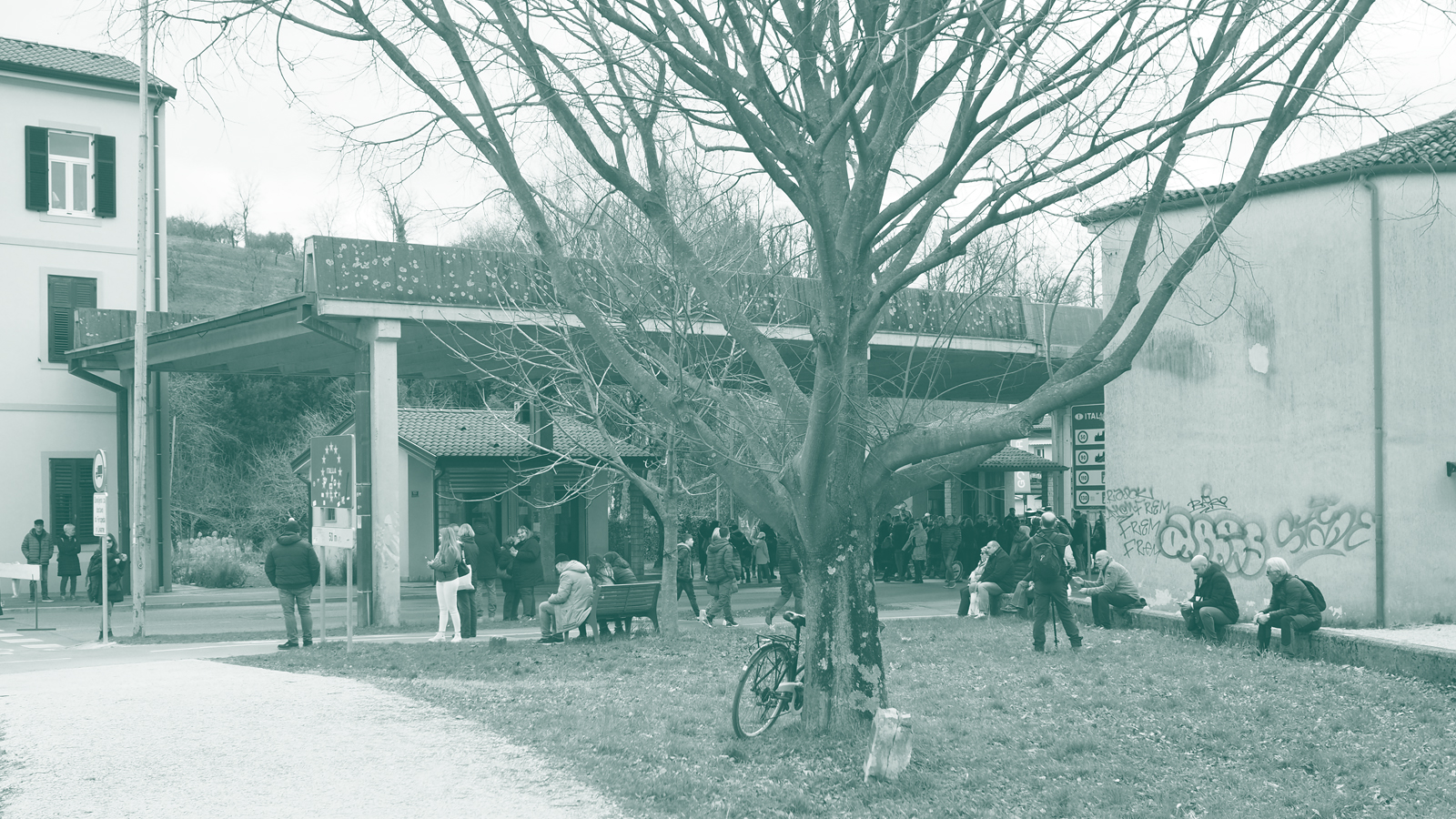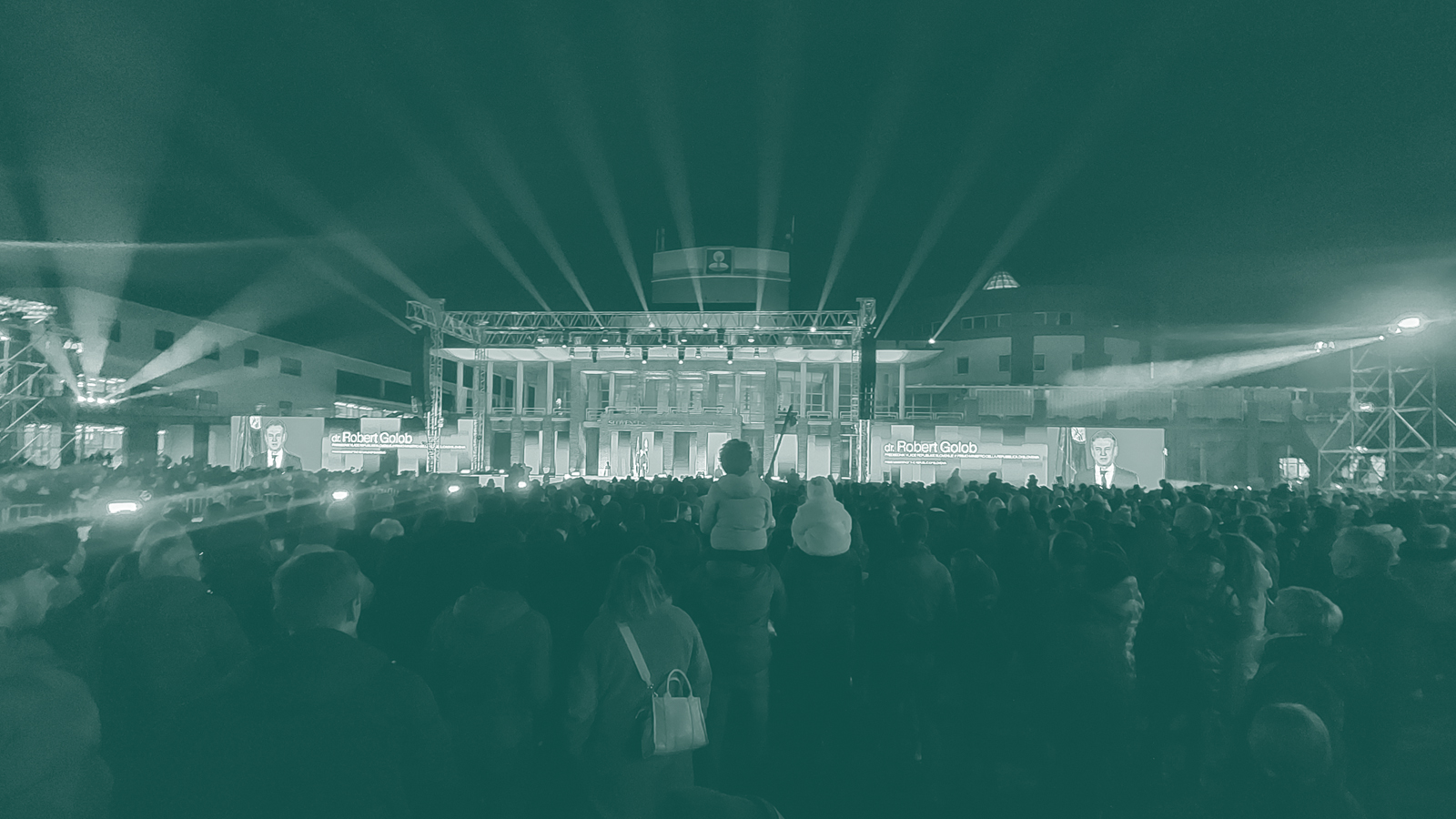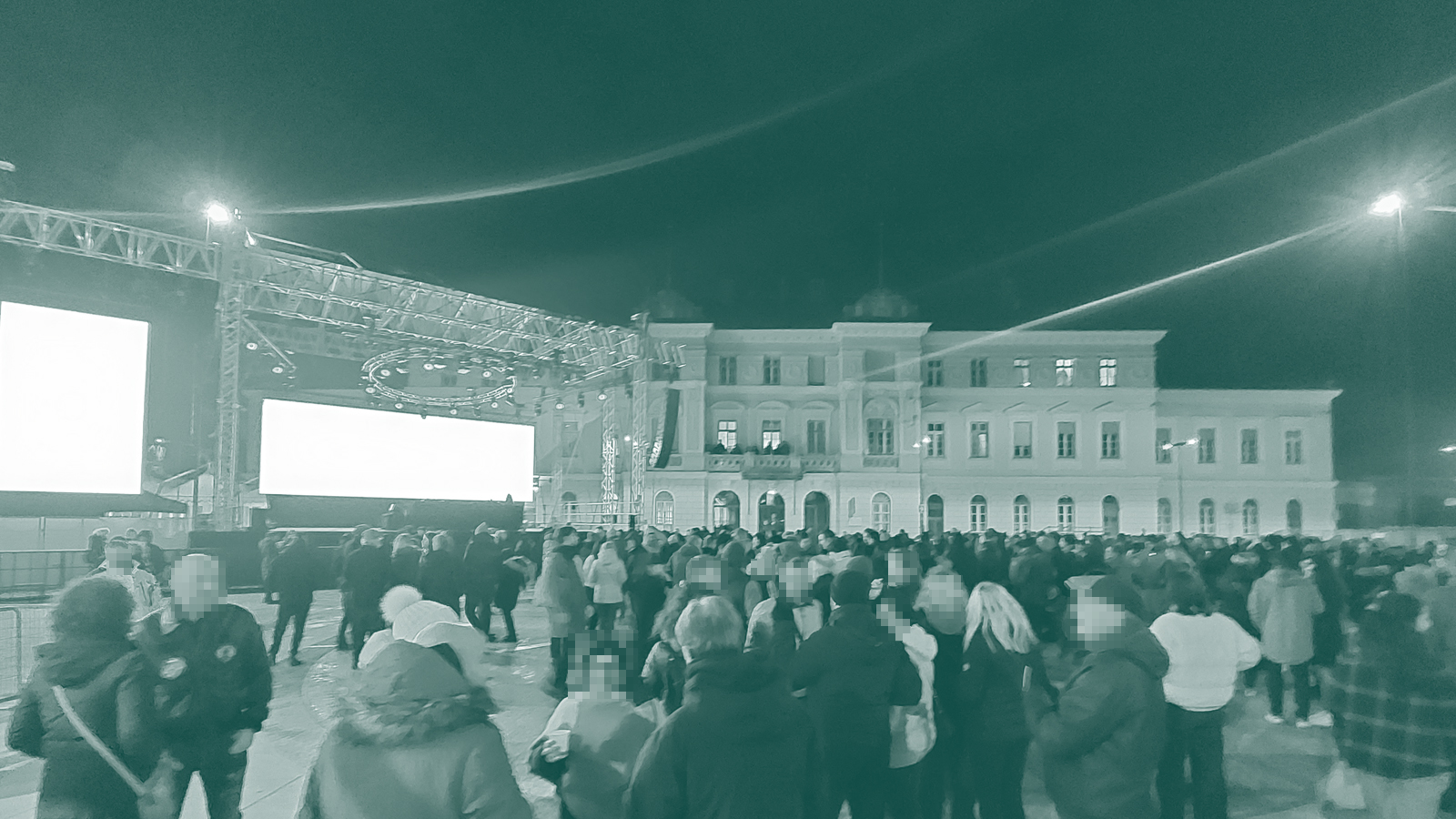On the morning of February 8, 2025, the excitement to gather, participate, and celebrate the launch of GO!2025 — the first cross-border European Capital of Culture — was palpable not just in Nova Gorica and Gorizia but extending along and across the Italo-Slovenian border to the broader transnational stage. Under the slogan “GO! Borderless,” the conurbation’ successful joint bid stands as a groundbreaking example of cross-border cooperation in Europe, offering a counter-narrative to the current condition of polycrisis at stake.

The opening event, “From Station to Station,” set the stage for a weekend-long cultural program, unfolding as a cross-border journey through Nova Gorica and Gorizia.
The borderless vision temporarily reshaped the cities and their citizens’ perceptions in multiple tangible and intangible ways, blending multicultural and multilingual events, cross-border public mobility and a water green joint re-branded urban identity.
It began at Gorizia’s Stazione Centrale, moving through Piazza Vittoria/travnik, the main venue for Italy’s celebrations. The procession continued along via San Gabriele–Erjavčeva ulica, gaining momentum under the eponymous border crossing’s canopy. It moved forward Trg Bevkov and Trg Edvard Kardelj in Nova Gorica, the core arena of Slovenia’s events. Meanwhile, the introductory ceremony took place in Piazza Transalpina–Trg Evrope with the institutional discourses by Slovenia’s President Nataša Pirc Musar and Italy’s President Sergio Mattarella.

The recently renovated Piazza Transalpina–Trg Evrope, together with the building of the Nova Gorica’s Železniška postaja and the surrounding area with the new underpass, represents the core of the ECoC District and the symbolic heart of the borderless urban re-branding. By the evening, the cross-border square became a performative place to dance on the border, activating a collective ritual both to exorcise past border traumas and to wish for a borderless future yet to come.
Despite the cultural and spatial experience of crossing borders becoming visible from the first moment, the question of the ECoC legacy still represents a challenge for its actors and a hopeful ambition for its spectators.








